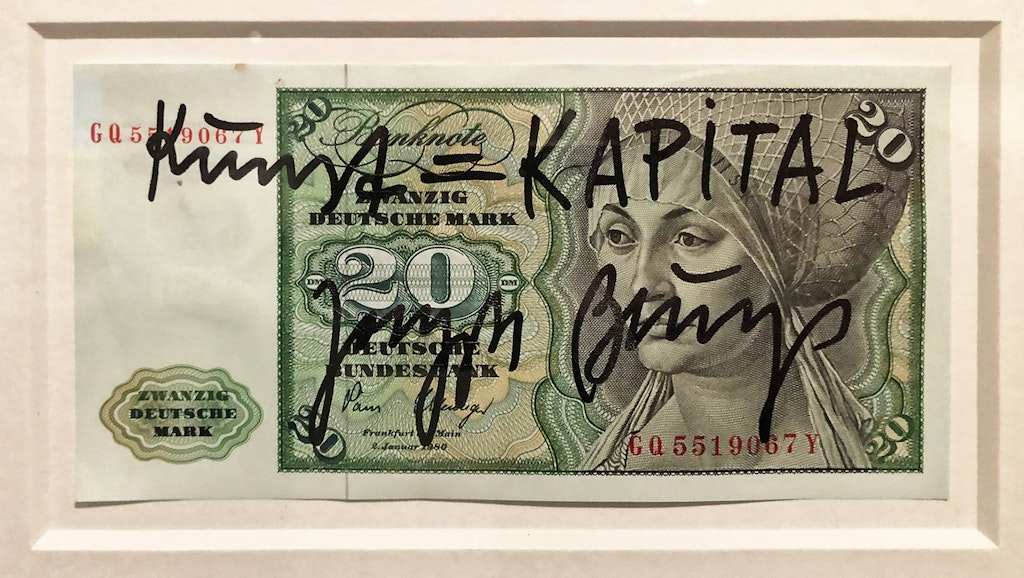The bastard son of democratic aestheticisation
How Donald Trump made populism funny
For a few weeks after Trump’s November 2016 victory in the US presidential elections, a strange subterranean online world was suddenly mainstream news. The BBC News at Ten, The Guardian and The Times etc, were running articles about Pepe the Frog, the secret meaning of the “A OK” hand gesture, and the political implications of drinking milk.
Online Trumpism also had mythological and legendary undertones. He was being proclaimed by some as the god-emperor — by others as he who would complete the system of German idealism. All this was met by the British centrist mainstream with complete incomprehension and accusations of fascism, and by the British left with just accusations of fascism. A small number of oddballs on the British right took online Trumpism seriously. For others it just seemed funny, which was surely the point.
In a 1935 essay, Walter Benjamin coined the phrase “the aestheticisation of politics”. The phrase can be taken in different ways, but at the most basic level it applies the idea of a separate realm of pure aesthetics (“art for art’s sake”) to the realm of politics — interpreting political displays like rallies as pure expression for expression’s sake, making its participants feel belonging and satisfaction without a genuine commitment to achieving structural change. For many it is also linked with the introduction of mythological tropes into the political sphere — the leader as a hero or saviour, particularly.
Few commentators have explored what it would mean if ever a politician were able to complete the system of an aestheticised politics — that is, combining effective aesthetics with instigating genuine change.
… liberal democracy has taken “aestheticisation” much further through spin, media manipulation, PR, and the cult of celebrity
Whatever the phrase’s original meaning, the fact is that some sort of aesthetic content is unavoidable in politics. If anything, liberal democracy has taken “aestheticisation” much further through spin, media manipulation, PR, and the cult of celebrity. Populist politicians do not appear from nowhere. They usually appear in liberal democracies with well-developed media machines where the claim of authenticity promises to upend a deadlocked status quo.
Against this background, Donald Trump might seem like the bastard son of liberal democratic aestheticisation, having been a celebrity before being a politician, and of all types of celebrity — a reality TV star. Such an observation might well be comforting to left-oriented theorists seeking to make sense of Trumpism, with the accusation of fascism bolstered by the movement’s mythological undertones. One thing this misses, though, is the importance of humour to the Trump phenomenon.
Humour is central to the aesthetics of populism. Humour is considered an aesthetic category because it names the impression caused by something — in this case, amusement. One of things that makes humour distinct from, say, beauty, is that something which is amusing is more likely not to be designed to be amusing. The funniest things are often those which aren’t meant to be funny.
To find the Trump phenomenon funny in 2016 was akin to wearing a MAGA hat and being a sincere devotee
This was central for the online context of Trump 1.0. Laughing at Trump was, originally, just as subversive as laughing with Trump. The left wouldn’t distinguish between the two. To find the Trump phenomenon funny in 2016 was akin to wearing a MAGA hat and being a sincere devotee. Yet there was little to suggest the mainstream campaign was meant to be funny. Trump seemed to take himself seriously, as did his supporters. The 4chan world was a million miles away from the campaign itself.
All that 2016 stuff feels very retro now. Most of it has disappeared completely, or morphed into unrecognisable forms. Part of the reason for this is the wokesplosian of 2020. This changed things on the right both here and over the pond. Up till then the general tone was humour, irony, silliness, and point-scoring through memes. After that summer the right was more concerned with actually Doing Stuff™. People went from seeing crazy woke rhetoric as a university campus fad to be mocked, to something which needed strategies, policies, and gameplans in order to be stopped.
The broader context of Trump 2.0 reflects this turn from adolescent meme wars to battling about the realities of political change. Although Trump has distanced himself from it, Project 2025 shows that at least some on the American right have done concentrated forethought about not squandering the opportunities presented by a second Trump presidency.
Over here at least, some on the left have learnt the lessons of 2016 and so are trying not to be outflanked as humourless a second time. A recent video on Novara Media discussing Trump’s Joe Rogan appearance involves laughing at the humourous absurdity of some of his expressions, before slipping back to the usual concerned disapproval. So now there must be a difference between laughing at and laughing with — but people can only laugh with Trump if he is self-aware enough to court humour.
A significant change between 2016 and 2024 might be precisely this — a Trump who invites you to laugh with him. In his Al Smith Dinner speech, there was a moment of self-awareness unlike anything from 2016. Near the beginning he said, “Tradition holds that I’m supposed to tell a few self-deprecating jokes, so here it goes”, before the punchline — “Nope, I’ve got nothing”.
During the speech that followed his driving of a garbage truck to the rally at Green Bay, he talked of his uncertainty about whether he’d make it up the truck’s steps and be able to open its doors, and how embarrassing it’d be if he fell on his face before the world’s media, told to much laughter and applause. Maybe Trump 2.0 will complete the system after all, it just isn’t the same system people joked about in 2016. It’s the system of an aestheticized politics that combines the deliberate cultivation of certain affects with the intention to instigate far-reaching political change.
Enjoying The Critic online? It's even better in print
Try five issues of Britain’s most civilised magazine for £10
Subscribe














